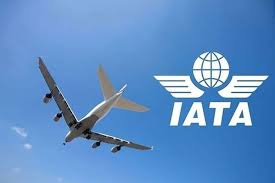The International Air Transport Association (IATA) has announced a 5.0 per cent increase in global air passenger traffic for May 2025, showing steady recovery and resilience in the aviation sector despite regional challenges and geopolitical tensions. The report, released on Monday, shows that the growth in international passenger demand outpaced domestic markets, with Asia-Pacific leading the global recovery in air travel.
According to IATA, total global passenger demand, measured by revenue passenger kilometres (RPKs), rose by 5.0 per cent compared to the same month in 2024. Available seat capacity, measured in available seat kilometres (ASKs), also grew by the same margin during the period.
The global load factor, which indicates the percentage of available seating capacity that is actually filled by passengers, stood at 83.4 per cent. This was slightly lower than the 83.5 per cent recorded in May 2024, indicating nearly full flights despite minimal changes in capacity utilisation.
International air travel recorded a significant jump in May, with a 6.7 per cent year-on-year increase in demand. Seat capacity on international routes rose by 6.4 per cent, and the international load factor reached 83.2 per cent—a record high for the month of May. This surge was largely driven by increased travel across major long-haul markets and strong demand in Asia-Pacific routes.
On the other hand, domestic markets experienced a modest 2.1 per cent growth in demand. Capacity in domestic air travel increased by 2.8 per cent, but the load factor dropped slightly to 83.7 per cent, down 0.5 percentage points from May 2024.
IATA’s Director General, Willie Walsh, explained the uneven growth patterns across different global regions. “Air travel demand growth was uneven in May. Globally, the industry reported 5 per cent growth, with Asia-Pacific taking the lead at 9.4 per cent,” Walsh said.
He further noted that North America was the only region that recorded a decline in passenger traffic, with a 0.5 per cent drop. This was mostly caused by a 1.7 per cent decline in the United States domestic market, which had previously shown steady growth through 2023 and 2024.
Walsh highlighted the challenges airlines continue to face, particularly with external risks. “Severe disruptions in the Middle East in late June remind us that geopolitical instability remains a challenge in some regions. Airlines are doing their best to maintain safe operations with minimal inconvenience to passengers,” he stated.
He also pointed out that oil prices, which remained low throughout May, are a key factor for the industry, especially when instability threatens global energy markets. Fuel prices are closely monitored by airlines due to their direct impact on operating costs and ticket pricing.
Despite these concerns, IATA expressed optimism about the near-term outlook. With the Northern Hemisphere summer season approaching its peak, airlines are reporting strong forward bookings, indicating robust consumer confidence.
“Importantly, consumer confidence appears to be strong with forward bookings for the peak Northern summer travel season, giving good reason for optimism,” Walsh added.
The report comes at a time when airlines are ramping up schedules to meet summer travel demand. African airlines are also part of the growth story, with increased capacity to international destinations and stronger partnerships with global carriers. However, many African airlines continue to face issues like high operational costs, forex shortages, and infrastructure limitations.
Meanwhile, global aviation leaders continue to push for more sustainable practices and carbon emission reductions as air traffic rebounds. IATA has maintained its net-zero emissions target for 2050 and is urging governments and stakeholders to invest in sustainable aviation fuel (SAF), better air traffic management, and newer aircraft technology.
As passenger demand continues to rise and the sector navigates global challenges, airlines are focusing on improving operations, enhancing passenger experience, and building resilience in the face of economic and political uncertainties.
